-
Reflections on what we have discovered thus far...
The Nature of the Universe!

Adopting Stars!Some of the things that we discovered:
- You started the year by adopting a Star and presenting all kinds of information about your star!
- Our sun, though it looks big compared to other stars, is an average to small-sized star.
- Even the closest stars to us are very far away and impossible to get to.
We are very isolated and stuck in our Solar System! - Stars do not burn! They shine due to nuclear fusion in their cores where new elements are created. In our sun, hydrogen is fused with other hydrogen atoms to form Helium. In that process, a bit of matter is changed into pure energy!
- We call nuclear fusion the H-bomb on Earth, but the fusion in the sun's core provides the energy for all life on Earth. We are solar-powered!
- Stars vary greatly in size, temperature, and lifespan!
Ironically, the largest stars live for the shortest amount of time, then explode in a supernova! - We can tell the temperature of the star by observing its color.
The hottest stars are blue and the coolest are red. - We discovered that by studying a star's spectra we can determine the composition of the star, and by examining its Doppler Shift we can tell how the star is moving.
- We followed the history of the development of the H-R Diagram and noted that "standing on the shoulders of giants" means that we can see farther and discover so much more due to the work of many scientists in the past.
- We discovered that by plotting the temperature against the luminosity of a star, a star's life stages can be determined and categorized.
- We discovered that smaller stars, like our sun, have a very different future than more massive stars. Our Sun has about 5 billion years before running out of hydrogen in its core. Then, it will become a Red Giant, a Planetary Nebula, and eventually a White Dwarf, until it fades away.
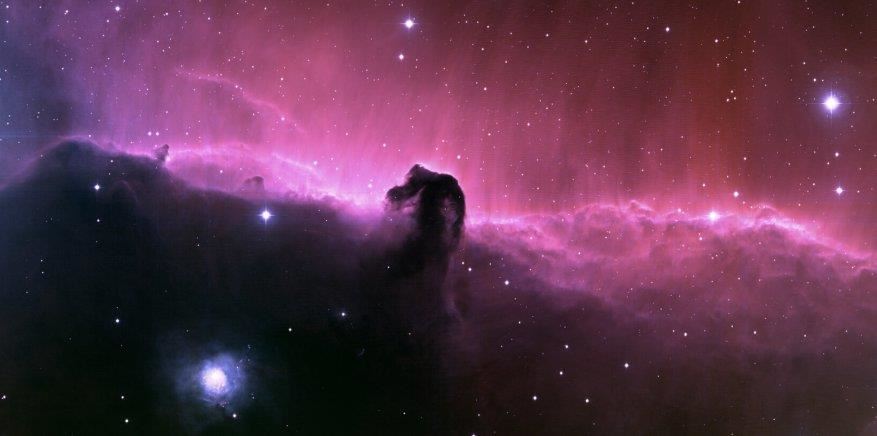
Cosmic Clouds!Some of the things that we discovered:
- We found that there are four main types of nebulae: emission, dark, planetary, and supernova-remnant nebulae. You did a great job presenting your nebulae!
- We discovered that nebulae are where new stars are born and are formed when old stars die, such as in a planetary nebula or a supernova remnant nebula.
- We discovered that by examining the light emitted by a nebula with a spectrascope, we can determine what elements make up that nebula.
- Nearby stars make those gases glow, producing beautiful emission nebulae.
- Dark Nebula block the light from background stars. This is where the gases are more concentrated and cooler, where gravity is pulling them together, and often where new stars will be born.
- When stars explode, they seed the universe with heavier elements forming supernova remnant nebulae.
- Second- and third-generation stars form from these heavier elements.
These stars contain heavier metals in their composition. - The fact that the Earth is composed of these heavier elements tells us that our solar system was formed from many stars that exploded, creating a supernova remnant nebula, well before our solar system existed.
- All we need is stuff, gravity, and time to form a solar system.
- The stuff that does not fall into the central sun or star forms the planets, moons, asteroids, and comets that revolve around the central star.
- The iron in our blood and every element other than hydrogen and helium were formed in the core of a star!
- It took billions of years for many stars to explode and create the elements that make up our Solar System and us!
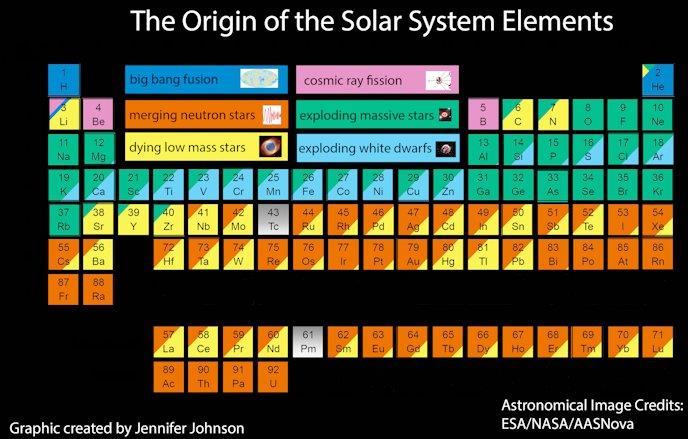
Nucleosynthesis!Some of the things that we discovered:
- We found out that there are three main types of nucleosynthesis, stellar nucleosynthesis, supernova nucleosynthesis, and Big Bang nucleosynthesis.
- Nucleosynthesis is the process by which elements are formed through nuclear fusion.
- Stellar Nucleosynthesis is what happens in the core of a star.
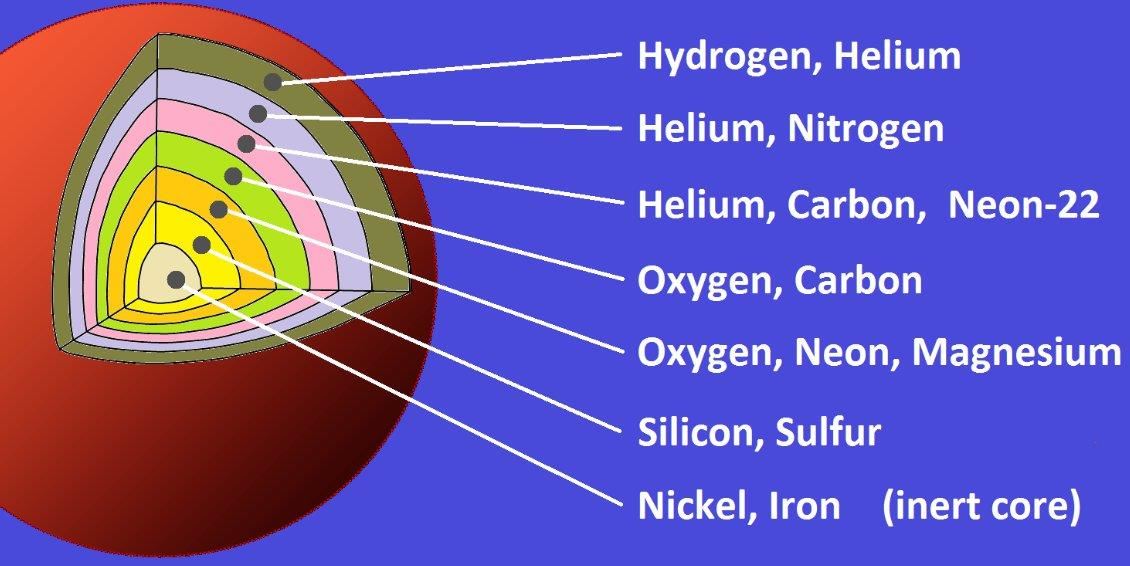
- Nuclear fusion in the core is called nucleosynthesis.
It creates (synthesis) a heavier atomic nucleus. - Once a star begins to form iron, it blows up!
- That produces a different type of fusion called Supernova nucleosynthesis!
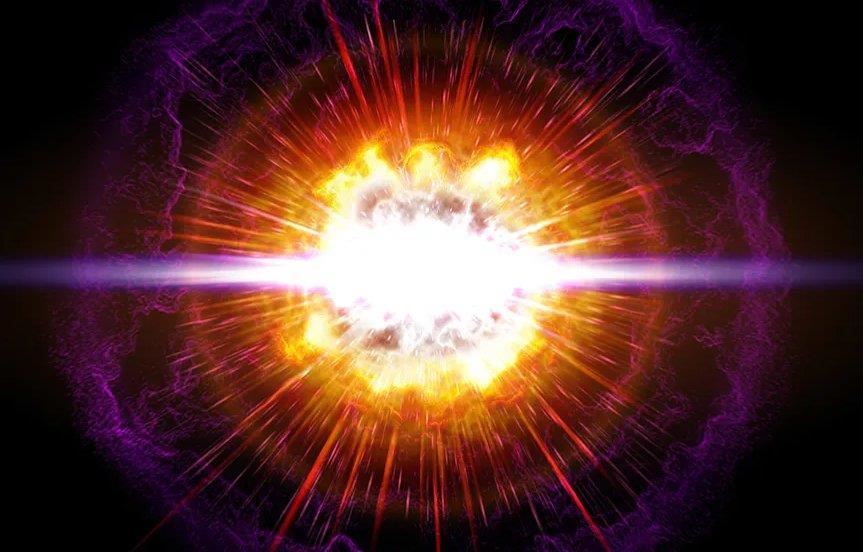
- In a very brief moment, many other heavier elements are formed and exploded into space!
- Supernova nucleosynthesis primarily creates elements heavier than iron.
This process, occurring during the violent explosion of a star, is responsible for synthesizing elements like copper, mercury, gold, iodine, and lead. - Elements produced during supernovae include cobalt, nickel, zinc, silver, tin, and uranium.
- Supernovas produce heavier elements and also, of course, produce nebulae where new stars are born from those exploded stars.
- The Big Bang Nucleosynthesis predicts that the universe should contain approximately 75% hydrogen and 25% helium.
- The approximate composition of the universe, which is 75% hydrogen and 25% helium, is strong evidence in support of the Big Bang Theory.
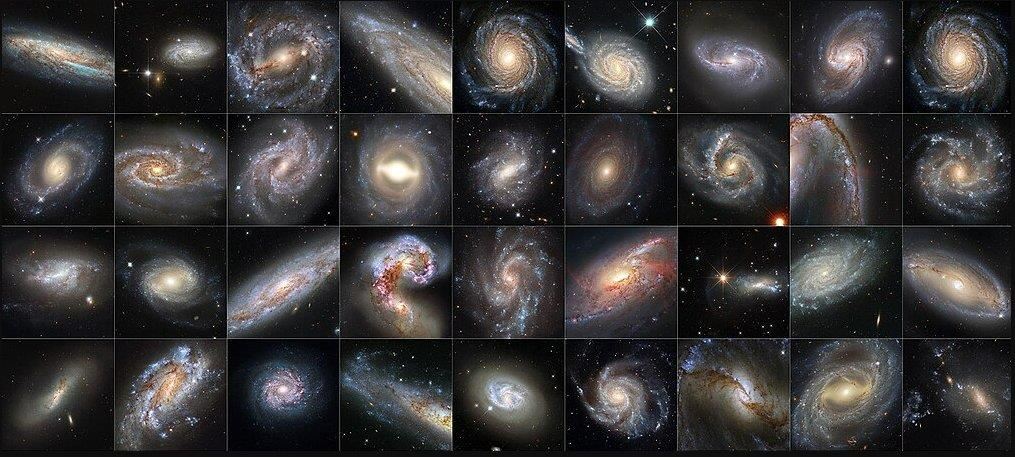
Galaxies!Some of the things that we discovered:
- We discovered that there are four main types of galaxies: spiral, elliptical, irregular, and peculiar galaxies. You adopted one and told us all about it!
- We found that most galaxies contain a supermassive black hole in their center and contain hundreds of billions if not trillions of stars!
- We discovered that when supermassive black holes feed on matter, they emit beams of energy, which are called quasars.
- We found that galaxies sometimes collide and produce irregular or peculiar types of galaxies.
- We found out that Edwin Hubble discovered that all galaxies have a Doppler Red-shift, and that the galaxies farther away have a greater redshift in their spectra.
- This Doppler Shift proves that the universe is expanding, and that the expansion rate is increasing.
- You became a citizen scientist and helped classify newly discovered galaxies using the James Webb Space Telescope.
- We discovered, through the JWST's "Little Red Dot" galaxies, that scientists think are among the first galaxies formed after the Big Bang.
- Those "Little Red Dots" were found not to contain stars, but they shone so brightly because supermassive black holes were pulling in hydrogen at such an extreme speed that their accretion disk shines as bright as a whole galaxy! Some of you even discovered "Little Red Dots" in your Galaxy Zoo Euclid Project!
- As we look even further out in space, and further back in time, we come to a time in the universe before any stars and galaxies even existed! That time is known as the "Dark Ages".

The Big Bang!Some of the things that we discovered:
- As we looked beyond, deeper than the dark ages, an image in the microwave radiation wavelength could be made out. On the very edge of our Universe near the beginning of time, scientists first stumbled on what became known as the Cosmic Microwave Background Radiation.
- This is an image of the afterglow of the Big Bang! A time when the first light was emitted in the Universe. This discovery confirmed that the Universe had a beginning which was very, very energetic and dense. A time when all matter was plasma and extremely hot!
- As it expanded, there came a time when it cooled to the point where the first atoms could form (Big Bang Nucleosynthesis). At that time, photons were free to emit this radiation, which still today, echos through the entire Universe.
The Strangest Things in the Universe!
Some of the things that we discovered:
- You investigated the following topics: Dark Energy, the Observable Universe and Multiverse, String Theory, Gravitational Waves, White Holes, Antimatter, Space Weather, the Wow Signal, Pulsars, LIGO, and the Higgs Boson!
- These are phenomena that most people do not understand very well! You should be proud of yourself if you took the time to delve into these "Strange Things" in a way that helps you understand them on a deeper level. These are, in fact, some of the very core ideas behind the Nature of the Universe!
- You should feel proud of yourself if you understand these much more complex topics!
The Goldilocks Zone Expanded!
Some of the things that we discovered:
- We discovered that the great depths of our universe confine us to search for life in our own Solar System.
- We found out that although the Goldilocks Zone (where liquid water exists on the surface) is limited to the planets Venus, Earth, and Mars.
- Venus ends up being way too hot for liquid water, and Mars much too cold (for the most part).
- We discovered that Venus and Mars are not very hospitable for life!
- You did, however, find some very interesting places in our Solar System where there are possibilities for life in oceans that lie beneath a crust of ice!
- The likelihood that this life is anything more than simple single-celled microbes is not very high.
There is hope and some interesting signs of the building blocks of life, even on comets and asteroids. - We seem to be the only place in our Solar System, if not the Cosmos, with beings who can understand what you have learned.
- Carl Sagan — 'The cosmos is within us. We are made of star-stuff.
We are a way for the universe to know itself.'
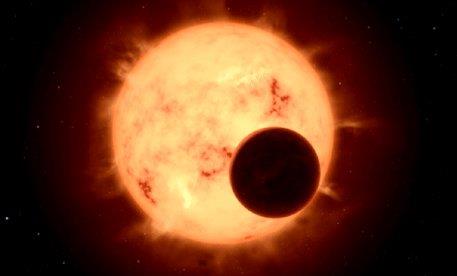
Exploring Exoplanets!Some of the things that we discovered:
- We found that most stars have planets!
- We also discovered that there are many, many stars in our own Milky Way Galaxy. 200-400 billion stars!
- We have only just begun looking for planets around other stars, and already we have found over 5,000 exoplanets.
- We have found some exoplanets that are in the Goldilocks Zone, where liquid water is thought to exist.
- We found out that it is not easy to find exoplanets because they do not shine like stars, so we need to find other methods to detect them.
- Sometimes the planet is lined up just right to transit its star and block the light. This makes the star appear to dim cyclically and predictably.
- Sometimes the planet's gravity tugs on the star and makes it wobble. We can detect Doppler shifts in the star as it wobbles.
- We discovered that we can even detect the gases in a planet's atmosphere by looking at the star's light as it passes through the planet's atmosphere with the use of a spectroscope!
- We examined the odds of intelligent life in our galaxy and calculated those odds using Drake's equation.
- We found that the odds of life existing in our galaxy are likely, but the odds of us traveling to another star to investigate that life are impossible!
- If we are going to find life and study it outside our planet, we will need to stick to our Solar System!
Did you hear about the recent discovery of Alien Life on Planet K2-18?
This should make sense!
We should have gained a much greater appreciation for our place in space!
Our great blue planet has a long and tumultuous past! One that life had to fight its way through many hardships and cataclysmic events! The story of its survival is a long and perilous one.
That is what we are going to dive into next!

